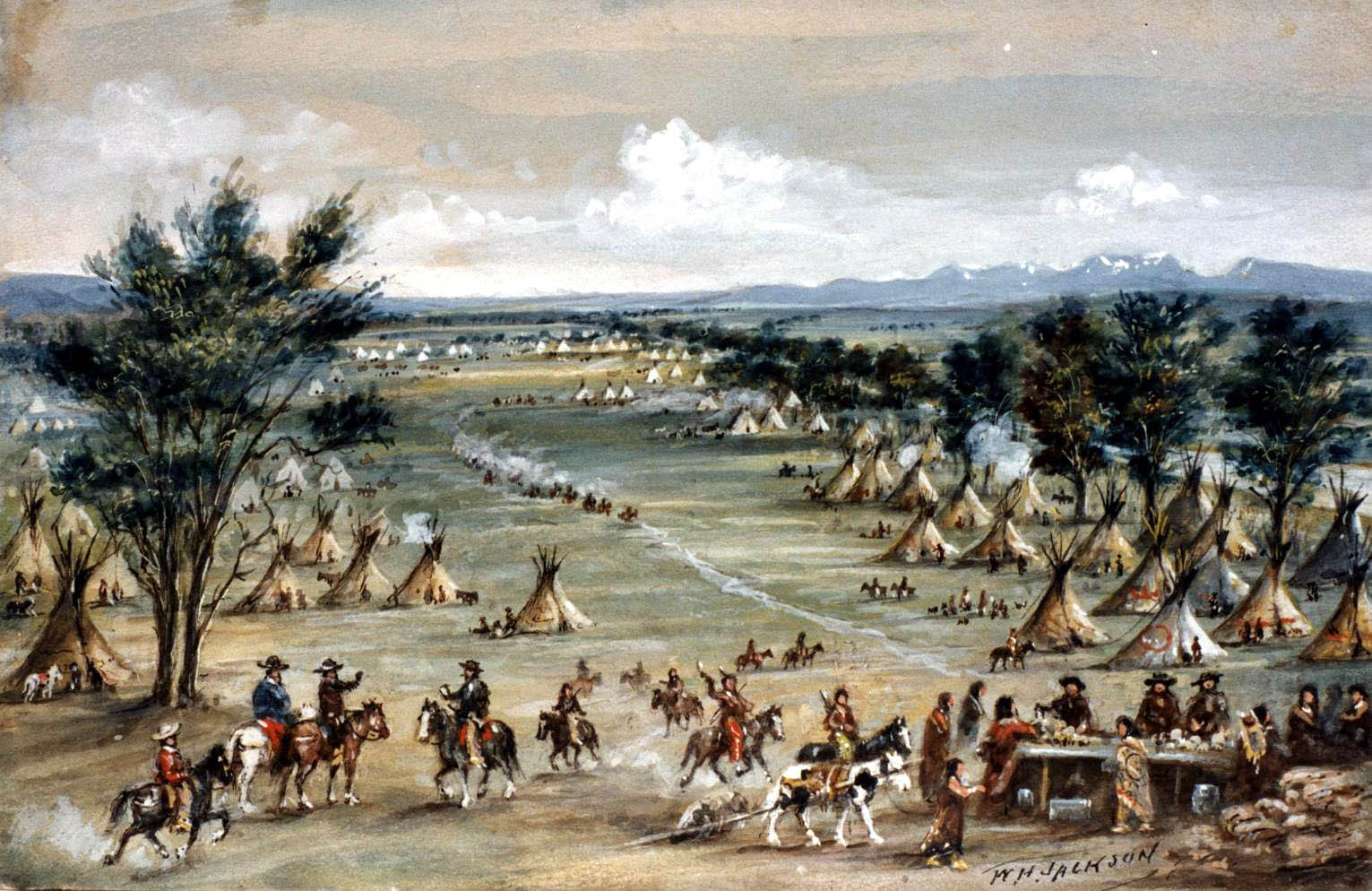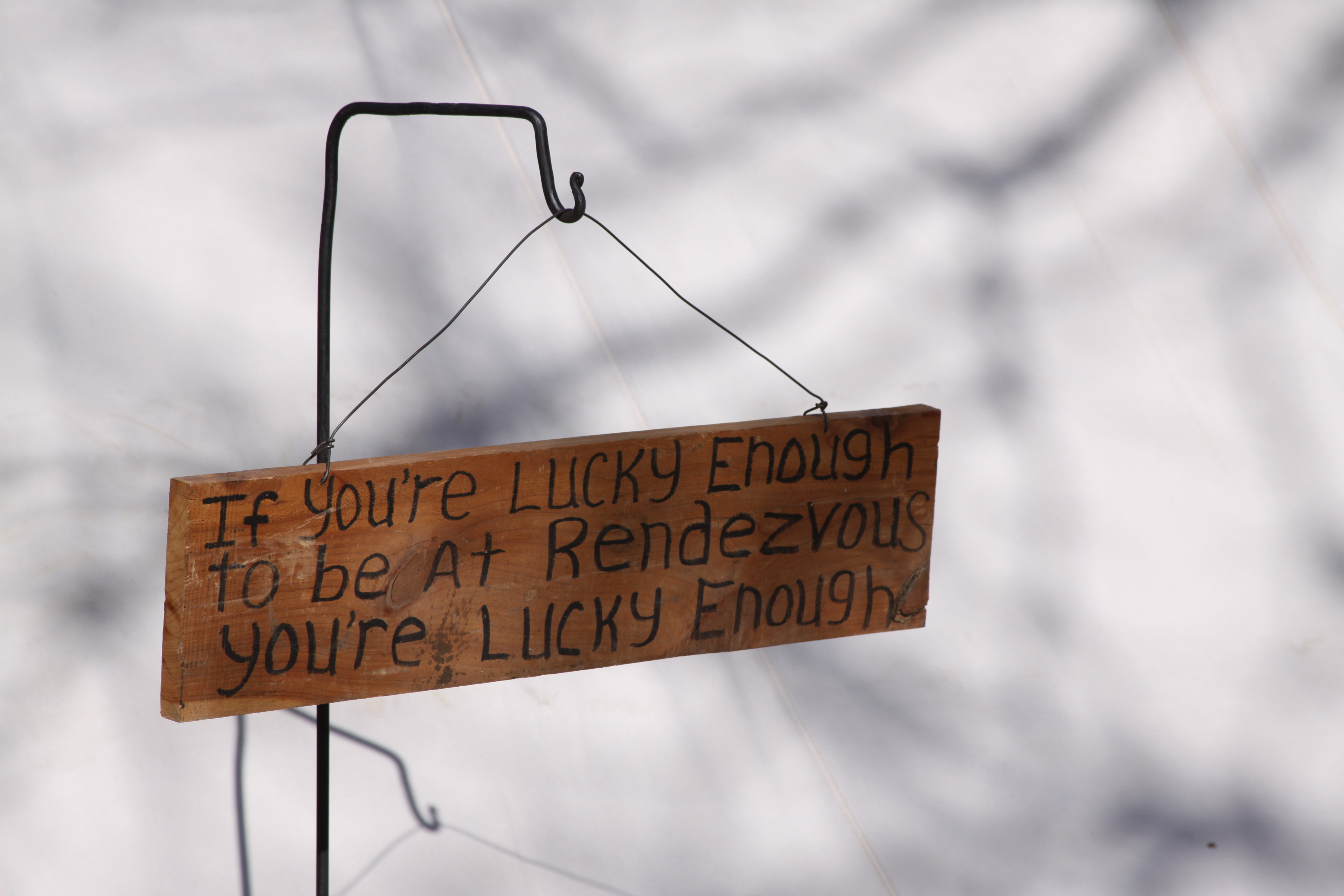Rendezvous is a French term meaning "to meet at a pre-arranged time and place."

William H. Ashley and Andrew Henry are the men responsible for the rendezvous system of bringing beaver furs out of the Rocky Mountains to the markets in St. Louis. Ashely and Henry had served together during the war of 1812. They were partners in the mining business in Missouri when the fur business picked up after the war.
Andrew Henry was an experienced trapper and respected leader. He had been partners with Manuel Lisa in the Missouri Fur Company and was the first to lead a trapping party into the country west of the Rocky Mountains. Henry was the first to trap Henry’s Fork and the Three Forks of the Missouri. He was well aware of the wealth of furs to be obtained in the Rocky Mountains and the difficulties involved with bringing these furs to market.
William H. Ashely was a successful businessman and politician. After Missouri became a State in 1821 Ashely was elected to the office of Lieutenant Governor. As the fur business in St. Louis picked up, Ashley could see the opportunity for fortunes to be made. He also understood why the fur business was not operating as efficiently as it could.
These two men, good friends and business partners, developed a new approach to the beaver fur industry. Instead of trading with the Indians for beaver, they decided to depend mainly on their own trappers. So it was, that in 1822 Ashley placed the famous advertisement in the Missouri Gazette and Public Advertiser.
TO ENTERPRISING YOUNG MEN
The subscriber wishes to engage ONE HUNDRED MEN, to ascend the river Missouri to its source, there to be employed for one, two, or three years – for particulars, enquire of Major Andrew Henry, near the Lead Mines, in the county of Washington (who will ascend with and command the party) or to the subscriber at St. Louis.
-Wm. H. Ashley
In April, 1822, Henry and his “enterprising young men” began their journey up the Missouri river. In October, they reached the mouth of the Yellowstone and built Fort Henry. Later that month Ashley arrived with supplies then returned to St. Louis. Henry and his trappers would later move into the head-waters of the Missouri to trap beaver.
Trouble with the Indians living along the Missouri River prevented Ashley from returning with supplies in 1823. With the river route blocked by hostile Indians, Ashley was forced to find an alternate route to supply his men and bring his furs back to St. Louis. He decided to travel overland with horses and pack animals avoiding the troublesome Indian villages. From that time forward, supplies were brought in by pack animals and trappers traveled on horseback.
In the spring of 1825 Ashley had split up his brigade of trappers into smaller parties and sent them off to trap and explore. They were instructed to meet later that summer at Henry’s Fork. This was the first “rendezvous” of the Rocky Mountain trappers.
The following summer the rendezvous was at Willow Valley in what is today Utah. This time Ashley included kegs of whiskey in his inventory of supplies. The rendezvous of 1826 was attended by a hundred or so trappers, their Indian wives, and some of the wives relatives. Camped in the vicinity were perhaps ten times as many Indians as trappers. Of course the Indians brought their families, lodges, horses, and dogs.
This rendezvous was unlike anything that had gone on before. In addition to the trading of furs for supplies and items brought in from St Louis, there was plenty of amusement. Horse racing, shooting contests, wrestling matches, tomahawk throwing, dalliance with Indian maidens, and gambling, all accompanied by plenty of whiskey. This unbridled revelry continued all day and all night.
Life for a trapper could be hazardous and was often lonely. A mountain man had to remain constantly alert for possible dangers if he intended to keep his hair. At rendezvous a man could relax his guard a bit in the safety of numbers. It is understandable that this annual event would be attended with such enthusiasm and celebration. To the mountain man it was much more than an annual trade fair. It was a celebration of having survived another year.
Eventually, the whiskey would run out, the furs were packed and on the way to St. Louis, and the rendezvous concluded. By the time it was over, most of the trappers had spent their entire year’s earnings on supplies, whiskey, and gambling.
This system of obtaining beaver through the summer rendezvous Ashley and Henry had created became a permanent and colorful part of the fur business and the mountain man’s life style until the decline of the fur trade brought it to an end in 1840.
Today, on almost any weekend, all across the Country and even in other Countries, you can find groups of people recreating this fascinating and colorful period of American History. They are having a rendezvous.

